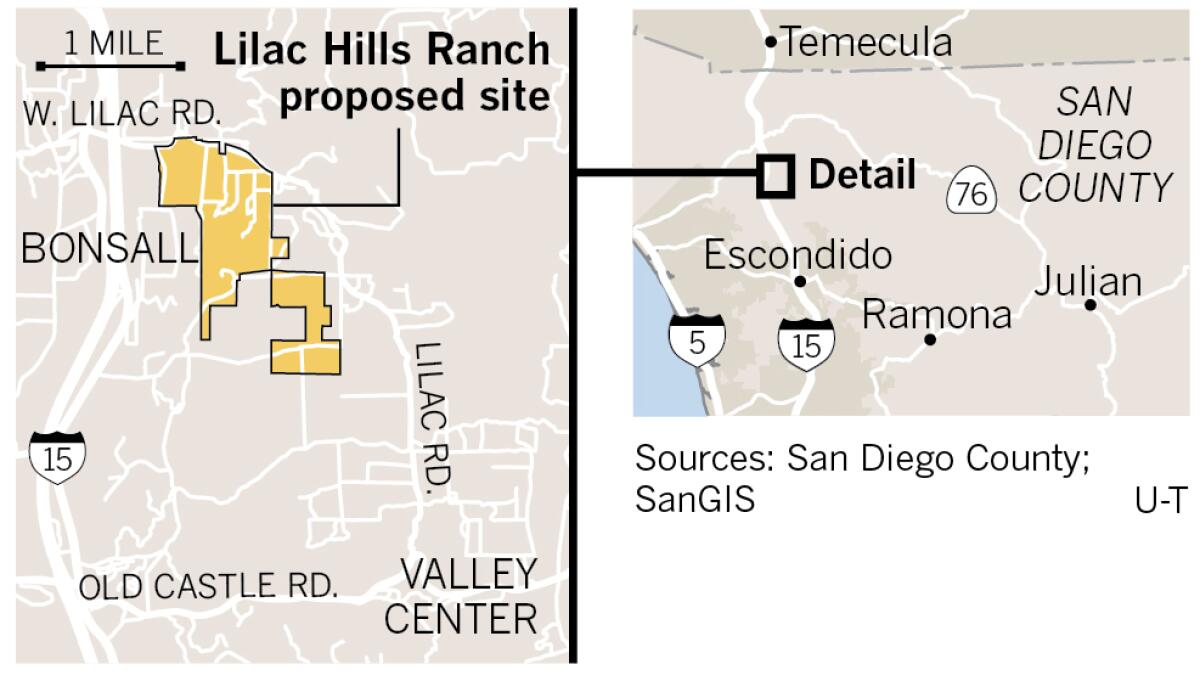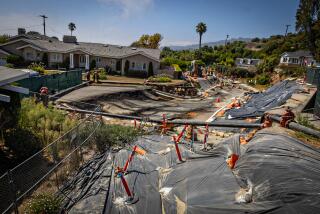San Diego supervisors reject Lilac Hills Ranch development over wildfire concerns
SAN DIEGO — San Diego County supervisors Wednesday rejected the proposed Lilac Hills Ranch housing development citing wildfire concerns.
The Board of Supervisors voted 4 to 1 to reject the more than 1,700-home master-planned community near Valley Center. Supervisor Jim Desmond cast the lone vote in opposition, citing the need for housing.
The development would have required amending the county’s general plan, which allows for just 110 units to be built on the site.
“Any project that blows up our general plan and puts property and life in peril [is] not acceptable,” said Supervisor Dianne Jacob at Wednesday’s public hearing.
She added: “This is a bad project. It’s in the wrong location.”
Lilac Hills has been through numerous incarnations over the last decade and was overwhelmingly rejected by voters after the developer put it on the 2016 ballot.

The housing developer — formerly Accretive Investments, now called Village Communities — has struggled for years with how it would evacuate a projected 5,000 residents during an aggressive, wind-driven blaze along the mostly winding, rural, two-lane roads in the area.
The county has approved other projects despite similar wildfire concerns voiced by environmental groups and nearby residents, such as Adara at Otay Ranch and Newland Sierra.
But fire officials and county staff said this project was especially dangerous because, among other things, residents would likely become trapped on the narrow West Lilac Road during a wildfire evacuation.
Jon Rilling, project manager for Lilac Hills Ranch, rejected the county’s assessment.
“The project does not exacerbate fire-safety concerns along West Lilac, but rather residents along this road will be safer if the project is built because there will be more ways to get out and vegetation management funded,” he said.
Among other issues, county fire officials concluded that the developer would need to secure 20-foot easements along both sides of the road for brush maintenance. The developer wasn’t able to secure the requested legal agreements from nearby property owners.
Cal Fire San Diego Unit Chief Tony Mecham also said a center median proposed by the developer would not adequately increase the capacity of the road during an intense firestorm.
“The risk of the entrapment brought about along West Lilac Road ... exceeds what we feel to be an acceptable level of risk,” he said, adding: “That fire’s going to approach very quickly from the east, and I can tell you from a tactical standpoint, there is no place for us to hold a fire until it gets into the community.”
Supervisor Nathan Fletcher also noted that the project relied on meeting restrictions on greenhouse gas emissions from cars and trucks using a county offset program that has been rejected by the courts on multiple occasions.
“The general plan says this is the wrong place,” he said. “The fire chief says this is wrong. The voters have said this is wrong. The courts ... have said the offset scheme associated with general plan amendments are wrong. So how many times and how many different ways over how many years do we have to be told that this just isn’t going to work?”
Citing the need for housing, Desmond made a motion, which ultimately failed, to send the project back to county staff for revisions. After roughly a decade of negotiations over the project, the rest of the board signaled no appetite to draw out the process any longer.
Smith writes for the San Diego Union-Tribune.
More to Read
Sign up for Essential California
The most important California stories and recommendations in your inbox every morning.
You may occasionally receive promotional content from the Los Angeles Times.











